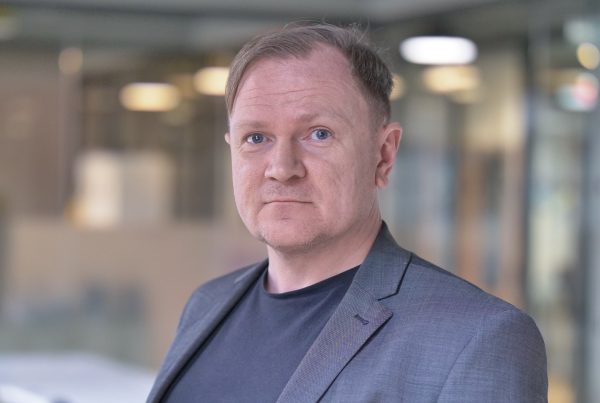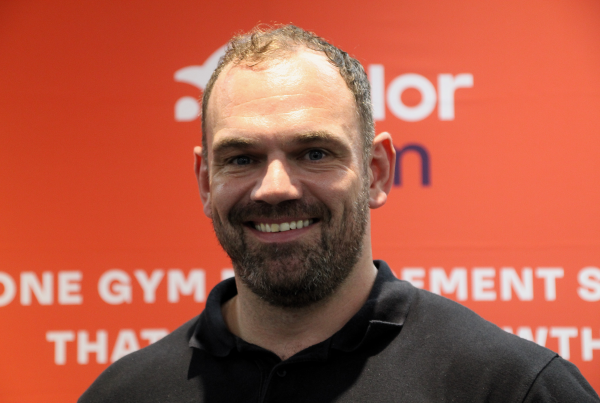By Nishal Desai, CEO and Co-Founder of Imin
Let’s get straight to the point: the industry is currently trying to make its mind up about “aggregators”.
There’s a new tone of skepticism around this topic; perhaps it’s always been there, and just found a collective voice, or maybe this is genuinely new sentiment as these “aggregators” start to be taken more seriously. Even if you’re not directly part of the conversation, you’ve probably picked up on the murmurs.
At imin, we interact with all manner of “aggregators” and fitness operators on a daily basis — generating what is perhaps a unique view of the situation from both sides. Here’s our take:
Operators are absolutely right to be cautious.
Naturally, the conversation so far has been driven by the larger operators and brands in the leisure sector. These organisations have power, reach and influence — and have a lot to lose if they don’t act wisely. It’s not just revenue — they employ tens of thousands of people between them, run thousands of facilities providing critical sporting infrastructure up and down the country, and coordinate community activities aimed at getting the most inactive active.
They have a heavy responsibility to ensure they make the right strategic decisions, so they need to be cautious. They have a heavy burden. If they get it wrong, we’ll all feel it.
But here’s the key question: is the trepidation about “aggregators” stopping us from recognising the genuine opportunities that exist to grow the market today, and the opportunities that are within reach for tomorrow?
Not all “aggregators” are the same
You’ll notice I keep putting “aggregators” in quotations. The meaning of this word seems to evolve rapidly depending on who’s saying it, and bundles a lot of companies together without distinction. The terminology needs clearing up —each organisation differs in product, business model, and (importantly) core purpose.
Here are some publicly available examples to show the range of who might want to partner with operators now and in the near future:
- Classpass — charging a monthly subscription cost to end users for a specific package of classes they can book onto every month. Pay operators at a discount per class.
- Change4Life — kids focussed campaign from Public Health England. No current commercial charge to operators.
- MyLocalPitch — commission-per-booking model helping players find and book their nearest sports venue.
- Get Active London — County Sports Partnership built platform, aimed to broadly appeal to the masses. Commission-per-booking.
- Badminton England badminton finder — NGB-driven product to help badminton players find and book courts and activities. Commercial model being explored.
- One You Hounslow — local authority driven health campaign for older adults. Commercial model being explored.
- PayAsUGym — primarily a pay-as-you-go model for day passes to gyms and classes. Also offers end-users monthly subscription for multiple gym and class visits.
- There are also a number of sports brands, health brands, and insurance organisations who are currently exploring the opportunity.
With these examples, it should be easier to see some distinctions (it’s a very different prospect dealing with Classpass vs a local authority). In order to better describe them as a whole, I’m going to stick to the phrase “marketing partners”, because in essence, that’s what they all are. The best marketing partners should succeed because they provide the best ROI, continually and consistently. They create value for the organisations they partner with.
Which leads to second level of distinction:
Value Capture vs Value Creation
There will be marketing partners out there that don’t care about growing the market. I will classify these as “value capture” platforms — at a high level, they do little else to engage customers apart from “aggregate” products and services from other companies. They seek to own the end-user outright, and generally commoditise the supply of classes and activities in the market.
Operators are very wary of these platforms, and rightly so — without the proper controls and measures in place, these value capture platforms can easily take control. If they get big enough to control a significant proportion of a given operator’s user base, the operators can find itself at the mercy of changes in pricing model and a lack of alternative options.
But for every value capture platform, there’s one or more “value creation”platforms. These marketing partners genuinely seek to provide services back to fitness operators. They don’t just create a user base by taking yours. They often care about getting people more active, getting inactive people active, and using lots of weird and wonderful mechanisms to help make that happen. Sometimes these marketing partners already have a significant user base, with an audience built off their own original value propositions. It’s these marketing partners we should focus on supporting as they represent the opportunity to grow the market together.
From zero sum to win-win
The market isn’t saturated; there are plenty of people who don’t have a fitness membership, and who aren’t regularly active (indeed, the latest Sport England data shows that overall, activity levels over 2016–2017 remained static). Value capture platforms are likely to be targeting the same people operators are already targeting, creating a zero sum game. On the other hand, value creation platforms will be targeting an audience (or already have one) that is outside the operator’s own reach or influence. Operators can choose to pay for access to this audience if it meets their organisational objectives (creating a win-win).
Of course you shouldn’t allow value capture companies to simply re-sell your products, and charge you a commission fee for the pleasure of doing so.
Of course you shouldn’t relinquish power to these platforms, enabling them to grow to such monstrous size that you’re then beholden to them.
And, of course, you shouldn’t ignore lessons from parallel sectors.
But this doesn’t mean you shouldn’t partner with anyone; it means go forward with eyes open, hands on the steering wheel. Choose to work with these companies in a way that puts you in control, and keeps you there.
The world is moving quickly, and it’s important to take measured decisions based on data and evidence, or as a sector we risk being left behind.
A simple way forward that keeps operators firmly in control
- Diversify who you collaborate with — running many concurrent experiments with marketing partners at the same time.
- Be dynamic about partnerships — a marketing partner might not be appropriate for all sites or all products, but they might still create value for some part of your estate. It doesn’t have to be all or nothing.
- Hold marketing partners to account — closely monitor how you’ve gained (or not) from the partnership. Their gain should also translate into your gain (or it’s not really a partnership). Don’t let them cannibalise your market without you realising. Learn to pick out the partners that will genuinely create value and not just capture it from you.
- Don’t be afraid to terminate relationships — ensure you build in flexibility and value-based triggers that allow you to act when you need to.
When you find marketing partners that create value for you, then yes, I believe you should pay for that in whichever way makes sense for you and that partner. Commission, monthly fee, whatever it is — just like you do for every other form of marketing.
If a partner doesn’t create value, don’t work with them and don’t pay them. Marketing partners that don’t sign up to that philosophy are probably the same partners you don’t want to work with in the first place.
(And to the marketing partners reading this — this advice to operators shouldn’t come as a threat, nor should you be upset it’s being said. If you’re truly value creating, you should relish the prospect of having these barriers removed and questions asked upfront so that you can evidence the true value of your platform).
We’re here to help
This is precisely where imin is positioned — working on behalf of operators to help them seamlessly connect with multiple marketing partners with complete control, complete measurability, and complete transparency.
Operators can (and should, in my opinion) collaborate with as many marketing partners as possible, in order that they can reach all parts of society. It’s critical for the the mission to get everyone active — especially in supporting the innovative technologies needed to reach those who are inactive.
I’ll be the first to admit that I don’t know exactly what will work. I suspect for every operator (or even every centre) it’s going to be a unique, dynamic blend of marketing partners based on budget, local population factors, season, and more. But what I do know for certain is this: if we’re not willing to try, in a controlled and transparent way, we’ll never know how much we stand to gain.
There might well be companies out there that are either knowingly or unknowingly trying to capture value from you — let’s work together to weed them out quickly, and get back to working with the partners that will genuinely create value.
If you’re ready to explore the possible, we’re ready to be your guide.

More People More Active More Often




